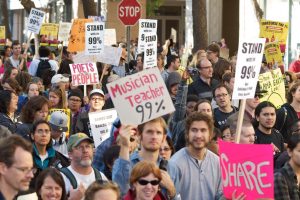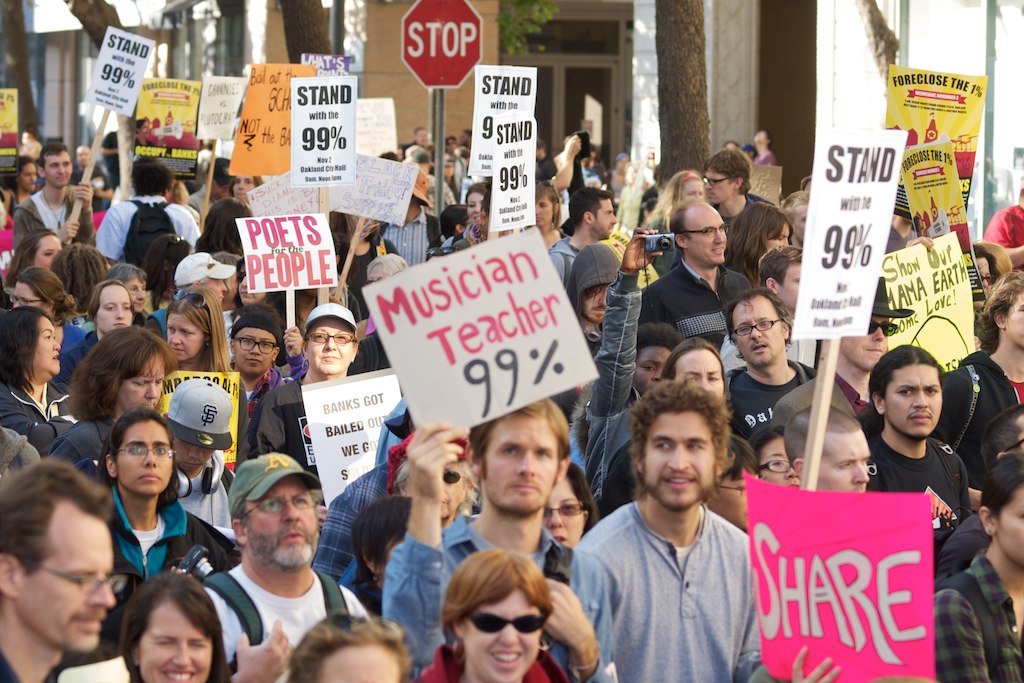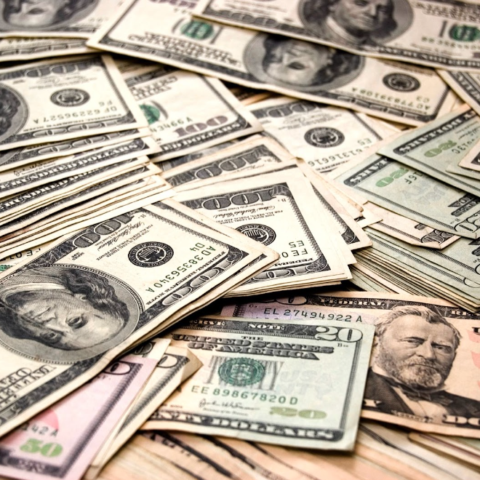By: Alex Edquist and Chris Neill
 When did economic inequality become such a hot-button issue? Pope Francis made headlines in November when he railed against economic inequality, asking, “How can it be that it is not a news item when an elderly homeless person dies of exposure, but it is news when the stock market loses two points?” President Obama also made waves when he called economic inequality “the defining challenge of our time.” The 50th anniversary of Lyndon B. Johnson’s War on Poverty brought attention to the state of the poor today. Republicans, too, have joined in the discussion about reducing poverty and economic inequality.
When did economic inequality become such a hot-button issue? Pope Francis made headlines in November when he railed against economic inequality, asking, “How can it be that it is not a news item when an elderly homeless person dies of exposure, but it is news when the stock market loses two points?” President Obama also made waves when he called economic inequality “the defining challenge of our time.” The 50th anniversary of Lyndon B. Johnson’s War on Poverty brought attention to the state of the poor today. Republicans, too, have joined in the discussion about reducing poverty and economic inequality.
Five years ago, almost all Americans were in the same (sinking) economic boat. In 2009, almost 3 million homes were foreclosed, the unemployment rate hit 10 percent, and the value of stocks dropped to $9 trillion from $22 trillion. In contrast, today’s economy, by many metrics, has not only recovered from the recession, but has also grown past its pre-recession levels. In 2013, real gross domestic product per capita exceeded its previous high in 2007, and the Dow Jones Industrial Average broke not only its nominal record from 2007, but also its inflation-adjusted record from 2000.
However, the gains from the economic recovery have not been evenly spread. The wealthiest 7 percent of American households saw their net worth rise 28 percent between 2009 and 2011, while the other 93 percent experienced a decline in their net worth. While the economy is slowly adding jobs, 58 percent of the added jobs are low-wage jobs, even though 60 percent of the jobs lost during the recession were middle-wage jobs. Overall, the richest 1 percent of Americans captured 95 percent of the economic gains of the recovery.
Even before the Great Recession, the economic trend was toward growing income inequality, but unemployment was low and house prices were high, which helped both the working and middle classes. The recession hit everyone hard, no matter where they were on the income scale. In contrast, the recovery has exacerbated the income inequality that existed before the recession. For example, the Federal Reserve responded to the weak economy with quantitative easing, which helped widen income inequality by boosting the capital gains of the wealthy. The economy is good once again for those at the top, but it is still stagnant for those below. Corporate profits and stocks have skyrocketed, but real wages and median household incomes have barely budged for decades, and unemployment is still stubbornly high.
The average American has not seen his or her economic situation improve much, and technology is largely to blame. Many middle-class jobs have either been replaced wholly or partially with automation or have been sent abroad because of technological advances. High-skill, high-wage jobs are not so easily replaced, and low-skill, low-wage jobs are still cheaper to perform with people than machines, so the job market has seen a “hollowing out” where middle-skill jobs are scarcer and high-skill and low-skill jobs are more prevalent.
The same has also helped lead to great inequality of opportunity. The United States has less economic mobility than most other developing countries, and the southern United States has particularly low levels of mobility (according to a study done by Berkeley and Harvard researchers, only 4 percent of those born into the bottom 20 percent of income distribution in Atlanta makes it to the top 20 percent). Today’s well-paid jobs mostly demand high skills and education levels, but inequalities in primary and secondary education as well as expensive colleges mean that children of the wealthy are able to acquire the needed skills more easily than the children of the poor.
In the past five years, the U.S. economy has seen two growing problems: income inequality and opportunity inequality. The issue becomes inherently political through disagreement over language. Traditionally, the left would take issue with income inequality – that is, inequality of outcome – while the right would take issue with a lack of mobility – that is, inequality of opportunity. President Obama has shifted closer to the latter framing, though the strong class distinctions and implications of wealth redistribution latent in the former appeal to fewer voters. A Jan. 2014 Pew Research Center survey found that 65 percent of Americans believe that in the past 10 years, the gap between the rich and everyone else has increased. The same survey also found that 53 percent of Americans believe that the government should do a lot to reduce poverty while only 43 percent believe that the government should do a lot to reduce the gap between the rich and everyone else. This means that Americans are increasingly cognizant of inequality of some sort, but more reluctant to see the problem as an inequality of outcomes.
The language used to frame the issue plays a crucial role in shaping public perception and garnering support for any relevant positions. “I would not, if I were [President Obama], hit hard on income distribution,” Vin Weber, Republican strategist and former congressman told the New York Times, “because everybody goes to their ideological corners right away and we’re at war.” The Occupy Wall Street movement adopted the “inequality of wealth distribution” position in its “1 percent” mantra. The movement’s detractors on the right were quick to deride this position as nothing short of class warfare. Such detractors’ position rests on the notion that as long as all citizens have similar opportunities to succeed, whatever outcome occurs in distribution of wealth is acceptable.
While the distinction in language may seem arbitrary, the framing of the issue has real policy implications. Those who focus on opportunity suggest that the government should do little, and that an unfettered market will lead to a thriving private sector that will create those very opportunities. This tends to manifest in policy discussion over tax and spending cuts, which would purportedly lessen the governmental burden on the private sector. Those who focus on opportunity argue that cutting taxes on wealthy individuals and corporations leaves them with more cash on hand to invest in future growth and put more citizens to work.
Conversely, supporters of income redistribution suggest that the government should play a more active role in redistributing wealth through taxation and social welfare policy. Democrats have proposed a more progressive tax code, raising taxes on corporations and individuals to fund support for the poor. Calls for increased spending on education, infrastructure, and social safety net programs also come from this position. Since the 2013 State of the Union address, the idea of raising the minimum wage has gained traction with Americans, 73 percent of whom support raising the minimum wage to $10.10 an hour from its current level of $7.25 an hour.
Whether they choose to focus on income or opportunities, Americans are increasingly seeing economic inequality as a problem in their country. From the President to the Pope, people have acknowledged that the problem has only gotten worse since the recovery from the Great Recession. In a highly polarized country represented by an even more highly polarized legislature, agreement on the causes and solutions to the defining problem of our generation does not come cheap.


